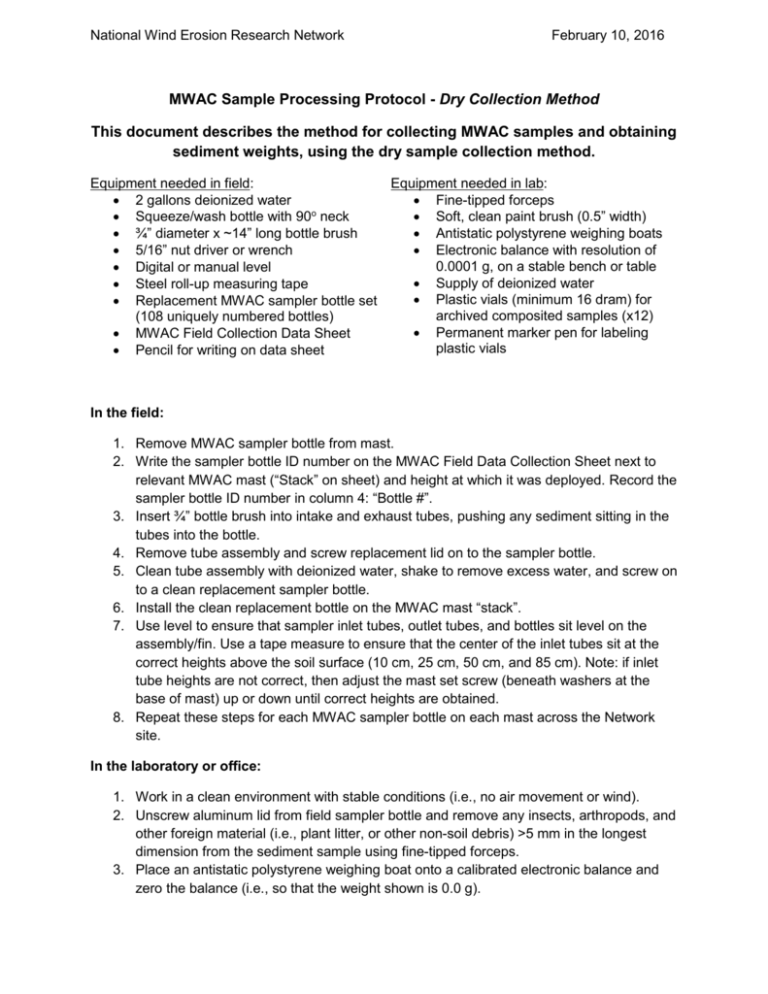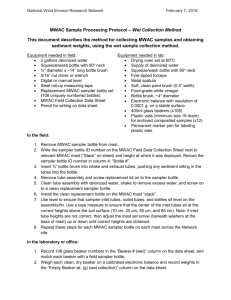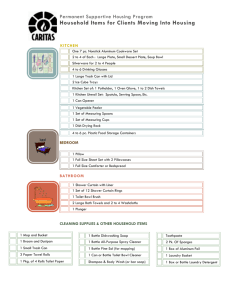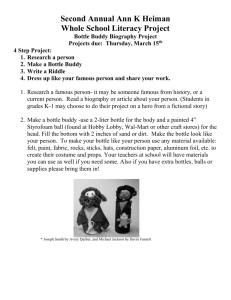Word - National Wind Erosion Research Network
advertisement

National Wind Erosion Research Network February 10, 2016 MWAC Sample Processing Protocol - Dry Collection Method This document describes the method for collecting MWAC samples and obtaining sediment weights, using the dry sample collection method. Equipment needed in field: Equipment needed in lab: 2 gallons deionized water Fine-tipped forceps o Squeeze/wash bottle with 90 neck Soft, clean paint brush (0.5” width) ¾” diameter x ~14” long bottle brush Antistatic polystyrene weighing boats 5/16” nut driver or wrench Electronic balance with resolution of 0.0001 g, on a stable bench or table Digital or manual level Supply of deionized water Steel roll-up measuring tape Plastic vials (minimum 16 dram) for Replacement MWAC sampler bottle set archived composited samples (x12) (108 uniquely numbered bottles) Permanent marker pen for labeling MWAC Field Collection Data Sheet plastic vials Pencil for writing on data sheet In the field: 1. Remove MWAC sampler bottle from mast. 2. Write the sampler bottle ID number on the MWAC Field Data Collection Sheet next to relevant MWAC mast (“Stack” on sheet) and height at which it was deployed. Record the sampler bottle ID number in column 4: “Bottle #”. 3. Insert ¾” bottle brush into intake and exhaust tubes, pushing any sediment sitting in the tubes into the bottle. 4. Remove tube assembly and screw replacement lid on to the sampler bottle. 5. Clean tube assembly with deionized water, shake to remove excess water, and screw on to a clean replacement sampler bottle. 6. Install the clean replacement bottle on the MWAC mast “stack”. 7. Use level to ensure that sampler inlet tubes, outlet tubes, and bottles sit level on the assembly/fin. Use a tape measure to ensure that the center of the inlet tubes sit at the correct heights above the soil surface (10 cm, 25 cm, 50 cm, and 85 cm). Note: if inlet tube heights are not correct, then adjust the mast set screw (beneath washers at the base of mast) up or down until correct heights are obtained. 8. Repeat these steps for each MWAC sampler bottle on each mast across the Network site. In the laboratory or office: 1. Work in a clean environment with stable conditions (i.e., no air movement or wind). 2. Unscrew aluminum lid from field sampler bottle and remove any insects, arthropods, and other foreign material (i.e., plant litter, or other non-soil debris) >5 mm in the longest dimension from the sediment sample using fine-tipped forceps. 3. Place an antistatic polystyrene weighing boat onto a calibrated electronic balance and zero the balance (i.e., so that the weight shown is 0.0 g). 4. Empty the contents of the MWAC sampler bottle into the weighing boat on the electronic balance. Note: do not remove weighing boat from balance to conduct this step. 5. Carefully tap the MWAC sampler bottle to transfer as much of the sediment as possible into the weighing boat. 6. Using a clean soft brush, carefully wipe any remaining sediment in the MWAC sampler bottle into the weighing boat. Once finished give the brush a flick/wipe to clean before using on next sample. 7. Record the weight of the sediment sample in column 8, “Sediment wt. (g) (dry collection)”, on the MWAC Field Data Collection Sheet next to the appropriate MWAC sampler bottle number from which it came. 8. If sediment sample is to be retained (recommended for further analyses), transfer the sample into the appropriate plastic vial for compositing (refer to Standard Methods for Wind Erosion Research and Model Development: winderosionnetwork.org/documents). Mark in column 9 on the MWAC Field Data Collection Sheet if the sediment sample was, or was not, composited for archiving: “Soil composited (yes/no)”. 9. Repeat these steps until all sediment samples are weighed, with weights recorded on the MWAC Field Data Collection Sheet at their appropriate location (i.e., for the correct sampler bottle number, deployment height, and MWAC mast/stack) and samples composited. 10. Thoroughly rinse the MWAC sampler bottles and lids inside and out with deionized water. Allow to dry upside down. 11. Replace lids on bottles when dry before deploying to field again. Page 2 of 2








